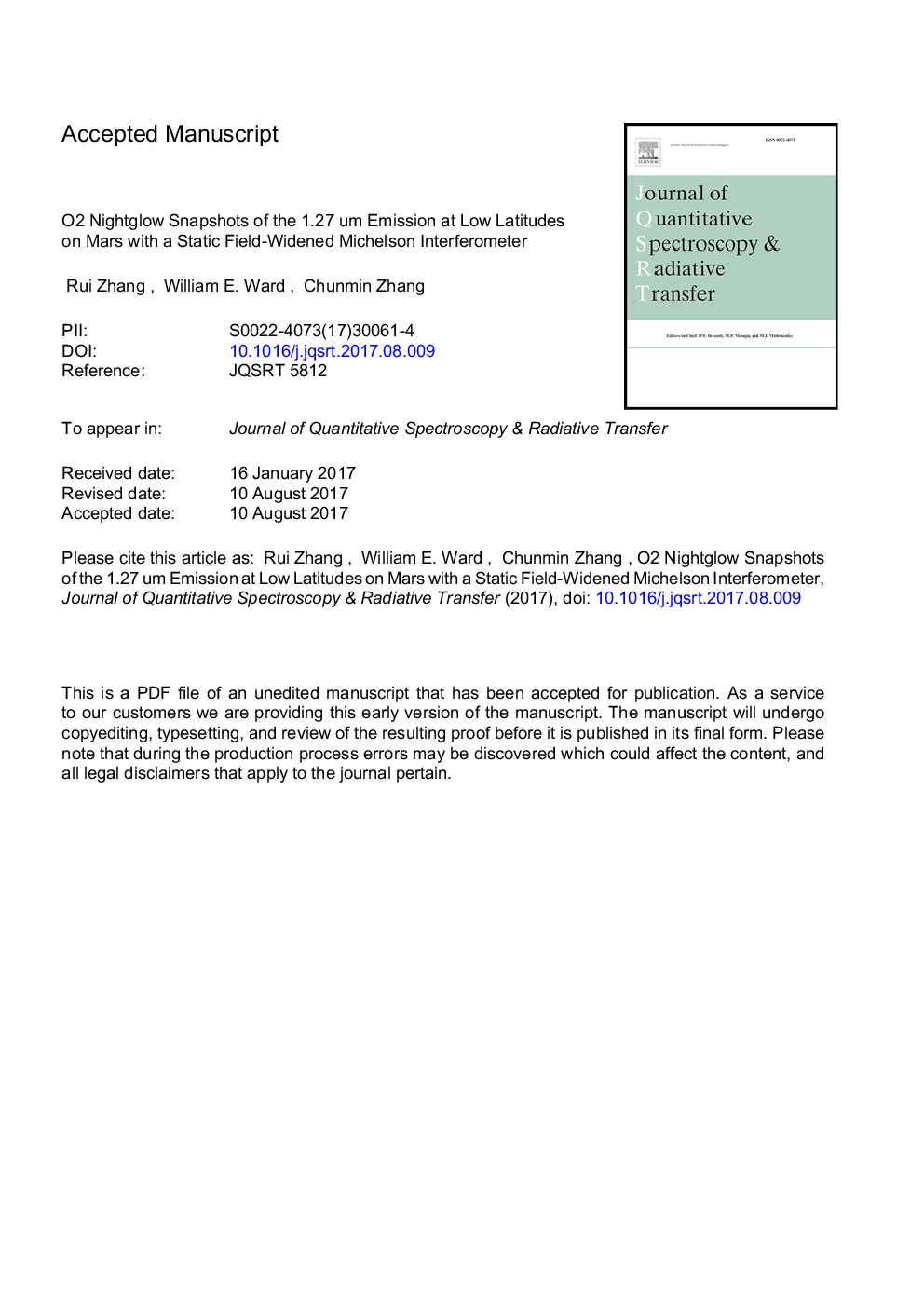| Article ID | Journal | Published Year | Pages | File Type |
|---|---|---|---|---|
| 7846551 | Journal of Quantitative Spectroscopy and Radiative Transfer | 2017 | 15 Pages |
Abstract
A static field-widened Michelson interferometer is designed to observe the atmospheric dynamics at low latitudes of Mars, targeting the 1.27 µm O2(a1âg) nightglow, which has not yet been accurately detected due to its low intensity. To the best of our knowledge, this design is the first demonstration of implementing divided-mirror technique by refringent materials in a field-widened Michelson interferometer. Different optical path difference (OPD) in each quadrant is generated by four highly reflective pyramid-shaped prisms made of different refringent materials attached to each solid arm of Michelson interferometer. In this way four samples of interferogram are obtained simultaneously, from which the airglow volume emission rate, as well as the line-of-sight velocity and temperature of the air parcel where the emission forms can be derived in a single integration time. To achieve the best field-widening, compactness and thermal compensation, all possible combination of ten pieces of glasses were searched within the Sumita glass catalogue using a computer program and some interesting results are listed. The OPD used in this calculation concerns rays in the plane perpendicular to the sides of the prism only, other cases need further examination. This instrument's performance in measuring atmospheric dynamics is analysed, using the wind velocity uncertainty as primary criterion. Calculations show that it can measure the wind with an accuracy better than 2 m/s if the band volume emission rate of O2 nightglow is greater than 5â¯kphâ¯cmâ3â¯sâ1.
Related Topics
Physical Sciences and Engineering
Chemistry
Spectroscopy
Authors
Zhang Rui, William E. Ward, Zhang Chunmin,
